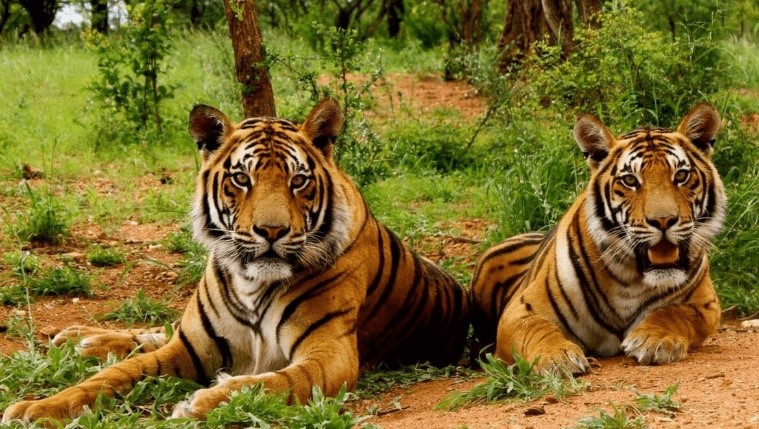International Tiger Day | 01 Aug 2022
For Prelims: International Tiger Day and its Significance, efforts related to tiger conservation
For Mains: Significance of Tiger Conservation
Why in News?
29th July is observed as International Tiger Day (ITD) to promote the conservation of the striped cat as well as to advocate a global system for protecting its natural habitats.
- ITD was established in 2010 at St Petersburg Tiger Summit in Russia in order to raise awareness about the decline of wild tiger numbers, leaving them on the brink of extinction, and to encourage the work of Tiger Conservation.
- The Manas Tiger Reserve in Assam has 2.4 tigresses for every tiger, the annual wildlife monitoring results of the trans-boundary wildlife preserve has revealed.
What are the Key Points Related to Tiger?
- Scientific Name: Panthera tigris
- Indian Sub Species: Panthera tigris tigris.
- About:
- It stretches from Siberian temperate forests to subtropical and tropical forests on the Indian subcontinent and Sumatra.
- It is the largest cat species and a member of the genus Panthera.
- Traditionally eight subspecies of tigers have been recognized, out of which three are extinct.
- Bengal Tigers: Indian Subcontinent
- Caspian tiger: Turkey through central and west Asia (extinct).
- Amur tiger: Amur Rivers region of Russia and China, and North Korea
- Javan tiger: Java, Indonesia (extinct).
- South China tiger: South central China.
- Bali tiger: Bali, Indonesia (extinct).
- Sumatran tiger: Sumatra, Indonesia.
- Indo-Chinese tiger: Continental south-east Asia.
- Threats:
- Habitat destruction, habitat fragmentation and poaching.
- Protection Status:
- Indian Wildlife (Protection) Act, 1972: Schedule I
- International Union for Conservation of Nature (IUCN) Red List: Endangered.
- Convention on International Trade in Endangered Species of Wild Fauna and Flora (CITES): Appendix I.
- Tiger Reserves in India
- Total Number: 53
- Largest: Nagarjunsagar Srisailam Tiger Reserve, Andhra Pradesh
- Smallest: Bor tiger reserve in Maharashtra
What is the Status of Tiger Population in India?
- There are currently between 3,726 and 5,578 tigers in the wild worldwide, according to the latest figures by the International Union for Conservation of Nature (IUCN).
- Tiger populations are stable or increasing in India, Nepal, Bhutan, Russia and China.
- India is home to over 70 % of the global tiger population.
- India has achieved the remarkable feat of doubling the tiger population in 2018 itself, 4 years ahead of the targeted year 2022 of the St. Petersburg Declaration on tiger conservation.
- According to the tiger census (2018) – conducted once every four years – India has a tiger population of 2,967.
What is the Significance of Tiger Conservation?
- Tiger conservation is a symbol of conservation of forests.
- The tiger is a unique animal which plays a pivotal role in the health and diversity of an ecosystem.
- It is a top predator which is at the apex of the food chain and keeps the population of wild ungulates (primarily large mammals) in check.
- Thus, Tiger helps in maintaining the balance between prey herbivores and the vegetation upon which they feed.
- Therefore, Tiger Conservation is not just about saving a beautiful animal.
- It is about making sure that we live a little longer as the forests are known to provide ecological services like clean air, water, pollination, temperature regulation etc.
What are the Related Steps Taken?
- Project Tiger 1973: Project Tiger is a Centrally Sponsored Scheme of the Ministry of Environment, Forests and Climate Change (MoEFCC) launched in 1973. It provides havens for tigers in the country’s national parks.
- National Tiger Conservation Authority (NTCA): It is a statutory body under the MoEFCC and was established in 2005 following the recommendations of the Tiger Task Force.
- Conservation Assured | Tiger Standards: CA|TS is a set of criteria which allows tiger sites to check if their management will lead to successful tiger conservation.

